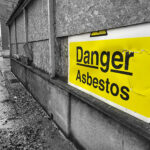A collision on Seoul’s busiest subway line left 172 people injured, with passengers forced to evacuate along train tracks. There were no fatalities.
An eastbound train collided with a stationary train in Sangwangsimni station in central Seoul, South Korea, officials from the subway operator and fire service said in a briefing at the station. There were no fatalities and all injuries are classified as minor following the collision, which didn’t cause a fire, the officials said.
The incident comes as criticism mounts over the government’s handling of Korea’s worst maritime disaster in four decades, with newspapers pointing to a lax safety culture and unenforced regulations on the nation’s transport networks. President Park Geun Hye pledged to establish a new department under the prime minister’s office to handle disasters following the Sewol ferry sinking on April 16, which left more than 300 people dead or missing.
“I don’t know what’s going on with this country,” said Lee Young Sook, in her 60s, who was forced to travel by bus to Sindang, one station before the site of today’s collision, because train services were disrupted. “It’s unbelievable that this has happened so soon after the sinking.”
The train collision happened at about 3:32 p.m., Seoul Metro official Jeong Soo Young told reporters at the scene. The operator is still investigating and the incident may have been caused by a red stop light coming on too late, Jeong said, citing the driver of the moving train.
The company also hasn’t ruled out a failure of the train’s automatic distance control system, Jeong said. The trains were manufactured in 1990 and 1991.
Hospitalized
The driver was taken to a hospital, Jeong said.
Middle school student Yoon Jae Min said he saw people leaving the station having difficulty walking and some with arm injuries as he approached Sangwangsimni. Footage broadcast on YTN showed the two trains’ windows smashed and passengers crowded onto the station platform.
Train services on Line 2 will take about four to five hours to return to normal. It’s the busiest subway line in the city of 10.4 million, carrying more than 2 million people a day, according to the Seoul government.
Subway stations in South Korea, which double as evacuation points in case of emergency including an attack by North Korea, are stocked with gas masks since a fire in the Daegu subway in 2003 left 192 people dead and 148 people injured. The fire was caused by an arsonist.
(With assistance from Shinhye Kang in Seoul.)
Was this article valuable?
Here are more articles you may enjoy.

 BNSF Says It Didn’t Know About Asbestos That’s Killed Hundreds in Montana Town
BNSF Says It Didn’t Know About Asbestos That’s Killed Hundreds in Montana Town  Sanofi to Pay $100 Million to Settle Zantac Cancer Lawsuits
Sanofi to Pay $100 Million to Settle Zantac Cancer Lawsuits  Zurich, Philadelphia, Others Ordered to Pay $345M to Cover Abuse Charges at Georgia School
Zurich, Philadelphia, Others Ordered to Pay $345M to Cover Abuse Charges at Georgia School  Report Using Aerial Imagery Keys in on Hailstorm Risks to Colorado Homes
Report Using Aerial Imagery Keys in on Hailstorm Risks to Colorado Homes 